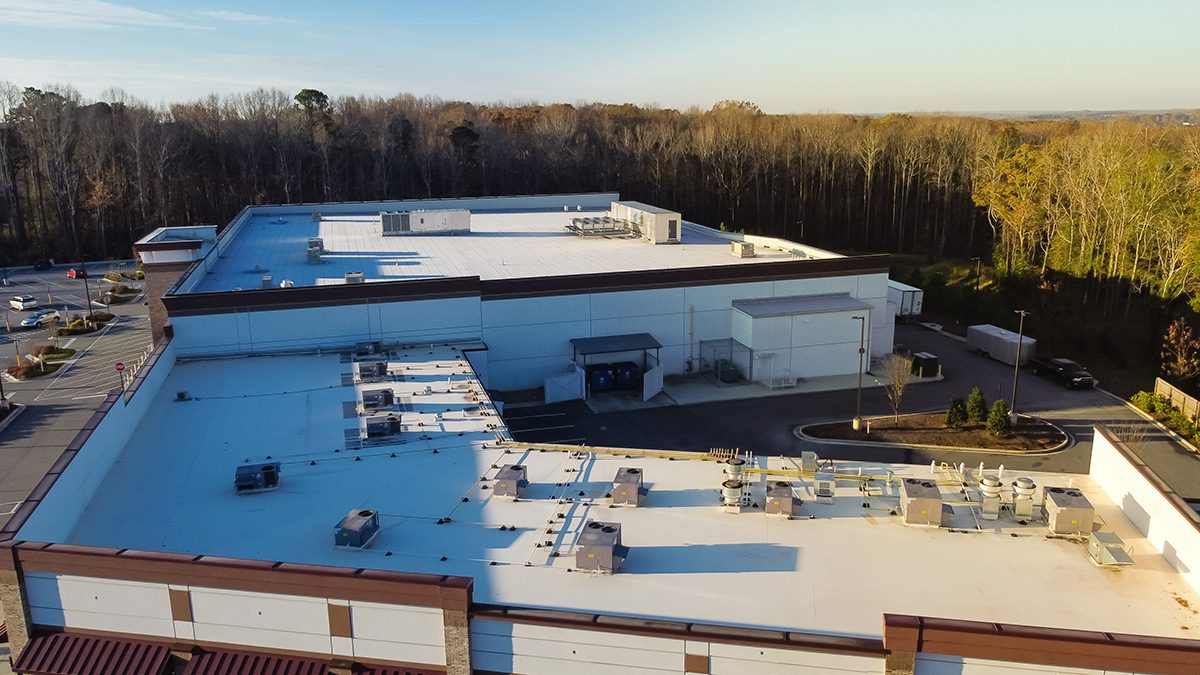The Art of Heating and Cooling Large Spaces
Warehouses, convention centers, shopping malls, stadiums – the world is full of massive spaces that require specialized heating and cooling systems to maintain a comfortable environment.
This article will explore the complexities, technologies, and strategies utilized to ensure optimal performance and energy efficiency in larger commercial HVAC systems.
The Challenges of Heating and Cooling Large Spaces
While both small and large HVAC systems work using the same principles, effectively controlling temperatures in large spaces requires a number of problems to be solved. Some of these challenges include:
- Size and Air Volume: Large spaces have greater air volumes, requiring more powerful HVAC systems to heat or cool the area effectively.
- Air Stratification: In large spaces, warm air rises and forms layers. It leads to uneven temperatures in different areas and potential discomfort for some occupants.
- Occupancy Fluctuations: Large commercial spaces experience drastic occupancy changes. It can significantly strain HVAC systems trying to maintain a consistent temperature.
- Diverse Use: Many large spaces contain various zones with distinct heating and cooling requirements.
- Energy Efficiency: Since running an HVAC system for a large space takes a lot of power, energy efficiency becomes a top priority. Wasted energy can quickly translate into increased operating costs.
Strategies and Technologies for Large Spaces HVAC
To overcome the challenges mentioned above, a range of strategies and cutting-edge technologies are available to HVAC engineers. These solutions help create comfortable, energy-efficient environments in large spaces:
Zoning Systems
Zoning systems divide a building or space into separate areas, or “zones,” each with its own temperature settings and climate control. Motorized zone dampers control the airflow to each zone by opening or closing as needed.
When a zone requires heating or cooling, the damper opens to allow conditioned air to flow into the space. When the desired temperature is reached, the damper closes, restricting airflow and conserving energy.
Separate HVAC Thermostats
Separate thermostats in each zone monitor the temperature and send signals to the HVAC system and dampers. The thermostats can be programmed individually, allowing occupants to set different temperature preferences for each zone.
The central control panel reads temperature information from the thermostats and sends commands to the HVAC system and zone dampers.
Air Rotation Systems
These systems combat air stratification by circulating air horizontally throughout space, ensuring even distribution and preventing temperature gradients from forming. The core component of an air rotation system is the air handling unit (AHU). It is responsible for drawing in outside air or recirculating indoor air, conditioning it, and distributing it throughout the space.
The AHU’s fan generates a large air volume at a relatively low speed. This results in a gentle and consistent air circulation pattern that helps to maintain an even temperature and minimize air stratification.
Demand-Controlled Ventilation
Such systems adjust the amount of fresh air brought into the space according to occupancy levels. This helps maintain a comfortable environment and reduces energy consumption by not over-ventilating during periods of low occupancy.
Demand-controlled ventilation systems use occupation or CO2 sensors to determine the occupancy level in each area.
Energy Recovery Ventilation (ERV)
ERV systems transfer heat and moisture between the exhaust and supply air streams, reducing the load on the HVAC system and improving overall energy efficiency.
The key component of an ERV system is the energy recovery core. As the exhaust air passes through the core, it transfers heat to the incoming outdoor air during the heating season or vice versa during the cooling season.
This way, the HVAC system requires less energy to heat or cool the incoming fresh air. Moisture can be transferred between air streams in a similar way, helping maintain indoor humidity levels.
Radiant Heating and Cooling
Radiant systems use panels or tubes installed in floors, walls, or ceilings to provide heating and cooling. They can be particularly effective in large spaces, as they distribute heat more evenly and do not rely on air circulation.
Instead of forced airflow, such systems rely on hot or chilled water as a heating or cooling agent. As the water circulates, it transfers heat or cold to the surrounding surfaces, which in turn radiates them to the occupants and objects in the space.
Variable Refrigerant Flow (VRF) Systems
This advanced technology is capable of simultaneously heating and cooling different zones, optimizing energy efficiency and comfort. It consists of a single outdoor unit that is connected to multiple indoor units.
Each indoor unit manages a specific zone, and the desired temperature is maintained with the help of refrigerant that flows through piping. The VRF system continuously adjusts the flow of refrigerant based on the cooling or heating demand of each indoor unit.
In some cases, such systems can transfer heat from zones that need cooling to zones that need heating, which makes it extremely energy efficient.
Building Automation Systems (BAS)
The building automation system can turn a regular building into a smart one. It is a computerized system that handles the HVAC, lighting, fire safety, and other equipment. Using various sensors, it constantly monitors the temperature, humidity, and other parameters of indoor air.
BAS systems use the data they collect to automatically adjust the parameters of an HVAC system, ensuring maximum energy efficiency and comfort. A building automation system also helps diagnose HVAC issues and make data-driven decisions to improve performance.
Conclusion
Heating and cooling large spaces is truly an art as much as a science. Each large HVAC system is unique due to unique challenges that engineers must overcome while working on each project.
If you need any help with your HVAC system, call us!


